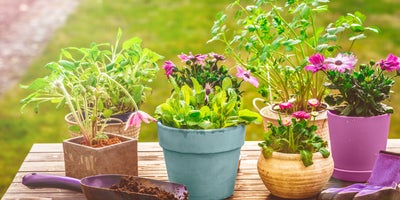Preparing container plants for winter

Winter is a tough time for most plants, but it poses a specific threat to containers. This time of year is the perfect time to do all your important prep work. That way, you don’t need to worry when the time comes. Low temperatures and harsh elements can damage even the hardiest of specimens. However, with a little bit of effort and attention, it's possible to protect your plants from winter's icy grip. As well as protecting them from the damage that freezing temperatures can cause, October is also the time to stop feeding as your plants start slowing down for the winter.
Shop the Range






